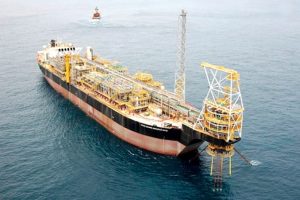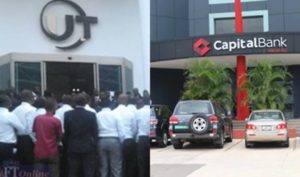 Figures released by the Bank of Ghana (BoG) yesterday have revealed that the government has, within three months, added GH¢1.3 billion to the country’s debt stock.
Figures released by the Bank of Ghana (BoG) yesterday have revealed that the government has, within three months, added GH¢1.3 billion to the country’s debt stock.
This brings the country’s total debt (both domestic and foreign) to GH¢89.5 billion as at the end of May 2015, up from GH¢88.2 billion recorded in March, this year.
The total public sector debt stock stood at GH¢89.25billion at the end of May 2015, representing 67.1 percent of GDP. Of the total public debt, domestic debt of GH¢35.7 billion constituted 26.7 per cent of GDP, and external debt of GH¢53.8 billion constituted 40.4 per cent of GDP.
The figures were contained in the Bank of Ghana’s economic and financial report for the last three months of 2015.
The Governor and Chairman of the Monetary Policy Committee (MPC), Dr. Henry Wampah, explained to journalists at a press briefing in Accra that the debt to GDP ratio was going to be lower in July because of the recent gains made by the cedi.
This means that Ghana loses 67.1 percent of its GDP to the ever-growing public debt. GDP is defined as the total market value of all final goods and services produced in a country in a given period, usually a year or quarterly.
Every Ghanaian owes over GH¢3,723
Ghana, with an estimated population of 24 million people, which when divided by the current public debt of GH¢89.5 billion, every Ghanaian would owe over GH¢3,723 to the country’s creditors, both internally and externally, as of May 2015.
Public debt accrues over time, when the government spends more money than it collects in taxation, and as a government engages in more deficit spending, the amount of public debt increases. That is the exact sad story of Ghana, according to economists.
But, the Minister of Finance, Seth Terkper, in the 2015 budget, admits there is an increasing debt service to revenue ratio that will require swift fiscal adjustment in order to put the economy on a path of sustainable public debt in the medium-term. Past MPC reports in possession of African Eye News have shown that in August 2014, the country’s public debt stock stood at GH¢66 billion, which was ballooned to GH¢76.1 billion as at the end of December 2014.
Widening Debt-Trap
A renowned economist and lecturer at the Ghana Institute of Management and Public Administration (GIMPA), Dr. Raziel Obeng-Okon, maintains: “As it stands now, the government cannot immediately get out of the debt-trap, because maturing obligations cannot be paid out of its relatively low revenue base.
“Restructuring of the debt from short to long term may bring some respite, but can only be sustainable if the short term relief is combined with strong fiscal consolidation.
“While swapping old debts with new ones, it is important that any surplus of the new debt, over and above the old debt, goes into projects that can pay for themselves.
“Otherwise, the restructuring would only lead to growing the debt without a corresponding growth in productivity or GDP, leading to a worsening situation of the debt-to-GDP ratio,” he told the newspaper in an interview.
An analysis of the country’s revenue base as a percentage of GDP, and the interest payment as a percentage of revenue, shows that the current level of public debt-to-GDP ratio may not be sustainable.
Given the country’s relatively low levels of revenues, vis-à-vis high and rising expenditure, the high debt-to-GDP ratio may make it more difficult for Ghana, in the medium term, to pay its debts.
This high debt, with its attendant high interest, contributed in creating a panic in the domestic and international markets, and credit rating agencies had to reduce Ghana’s rating further downwards.
Low Revenue to GDP Ratio
Dr. Obeng-Okon, who lectures Public Accounting at GIMPA, observed: “The total tax revenue to GDP ratio for most developed countries is about 40%, but the total revenue for Ghana, from January to September 2014, was about GH¢17.76 billion, representing only 15.4% of its GDP, which is too low, compared with the levels attained by the developed economies.
“Clearly, the revenue base for Ghana is too small to warrant the 67.1% debt-to-GDP ratio. The current debt level may be sustainable, only if Ghana can double its revenue base at the current GDP level to achieve a revenue-to-GDP ratio of not less than 25.0%, but this cannot be achieved in the short term.
“Government needs to pull the brakes on the expenditure side by prioritising its projects, and making sure loanable funds can be matched by revenue generating activities. I think the Finance Minister, Mr. Seth Terkper, has started looking at this option, but he should have done this much earlier. As it stands now, it is going to be difficult for Ghana to get out of the debt trap.”
Reviewing the Ghanaian economy Dr. Wampah noted that efforts to march revenue with expenditure appear to be working because of progress being made in tax collections.
Total import bill as at May this year, stood at $1.055 billion, whiles on the export side, government earned just $963 million, according to him.
Fiscal consolidation on track
The BoG’s preliminary fiscal data for the period under review indicated that the fiscal consolidation efforts are on track. Revenue and grants were above target on the back of strong growth in domestic revenue.
Dr Wampah stated: “The stock of gross foreign assets at the end of June 2015 was $4.5 billion, enough to finance 2.9 months of imports of goods and services.
Going forward, the anticipated inflows of more than US$4 billion from the Eurobond issue, syndicated cocoa financing as well as other programmed inflows in the second half of the year will provide a strong buffer and help sustain stability in the foreign exchange markets”.
Energy crisis weighs on growth
The current power crisis, arising from erratic supply of imported gas from Nigeria through the West Africa Gas Pipeline (WAGP) to power thermal plants in the Tema enclave in the Greater Accra Region and Aboadze in the Western Region, and the shortfall in electricity supply, occasioned by the drastic reduction of water in the Akosombo Dam reservoir, is having a toll on the country’s growth.
The BoG Governor added: “Domestic growth conditions remained vulnerable given the on-going fiscal consolidation and the impact of the energy crisis. The provisional update to the Bank’s real composite index of economic activity (CIEA) indicates a slower pace of growth during the second quarter of 2015 compared to the same period last year”.
Over the medium term, growth prospects remain positive, but there are potential headwinds. These include continued energy sector challenges, tight credit conditions, weak consumer confidence, and subdued commodity prices and production, he explained to the journalists.
Dr Wampah was however worried that the recent developments in the external environment such as volatile commodity prices, dampening global growth prospects, the anticipated change in US monetary policy stance and developments in Greece and Iran pose risks to the domestic economy.
The potential impact of these risks on the economy would continue to be closely monitored, he assured.
African Eye News.com





